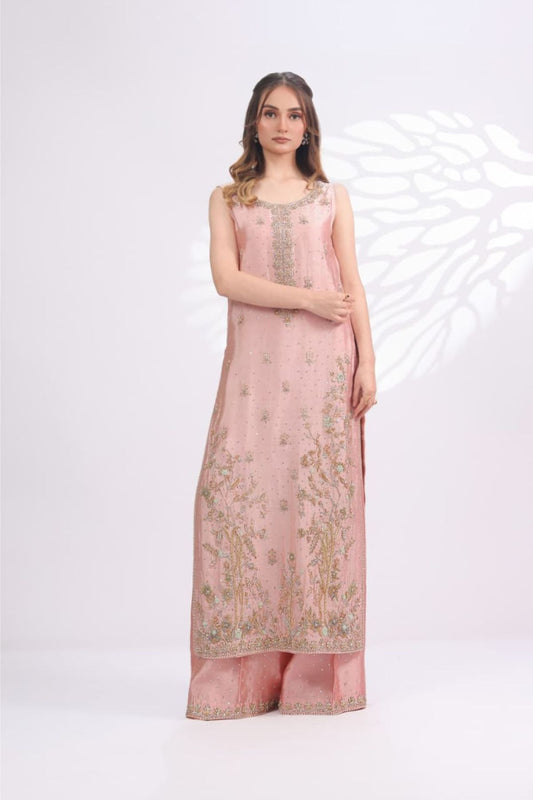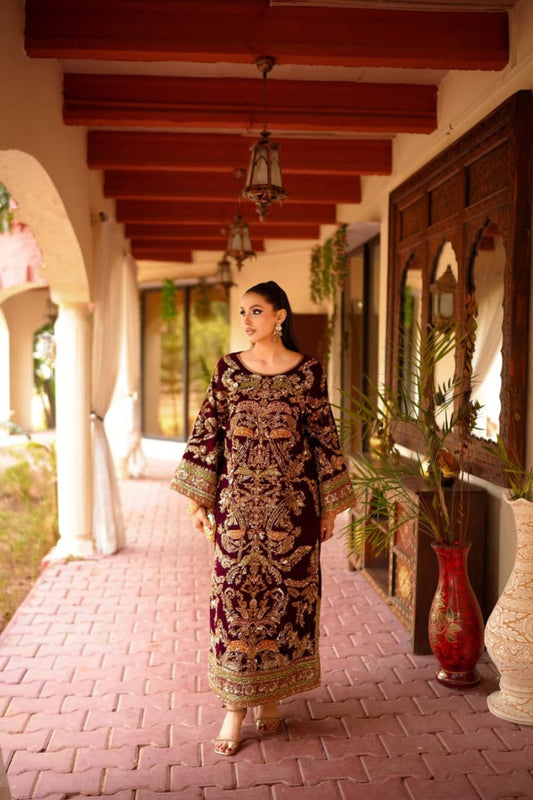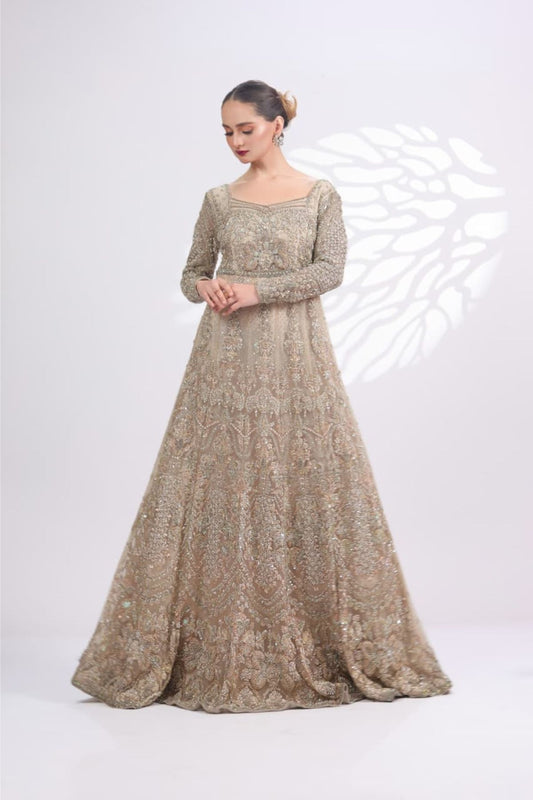Banarasi Sarees: A Tale of Timeless Elegance and Woven Heritage
In the heart of India's spiritual capital, Varanasi, lies a craft that has captured the hearts of generations: the art of Banarasi weaving. A Banarasi saree is more than just a piece of clothing; it is a magnificent tapestry of culture, tradition, and artistry. Each thread is a testament to the weaver's skill, and every intricate motif tells a story of a glorious past. For centuries, these sarees have adorned women on their most special days, making them a symbol of grace, luxury, and enduring heritage.
The allure of a Banarasi saree is born from its unique blend of shimmering silk and meticulous zari work. Wearing one is not just a fashion statement; it is an act of embracing a legacy that has been carefully passed down through the centuries. In a world of fast-changing trends, the Banarasi saree stands as a timeless classic, a canvas where ancient traditions and contemporary beauty come together to create something truly magical.
A Journey Through Time: The Historical Roots of Banarasi Weaving
The story of Banarasi sarees is deeply woven into the historical fabric of India. While the city of Varanasi has been a hub for weaving for thousands of years, the saree's distinct style as we know it today was perfected under the influence of the Mughal Empire. It was during the 16th and 17th centuries that Mughal emperors, with their refined taste for art and textiles, brought Persian motifs and intricate designs to the local weavers.
This fusion of Indian silk weaving and Persian art gave birth to the iconic patterns that define Banarasi sarees. The use of gold and silver threads, called zari, became a hallmark, transforming the sarees into garments fit for royalty. From the royal courts of the Mughals, the craft's popularity spread, and it became a source of pride for the artisans. These weavers, or karigars, preserved their skills by passing them down from one generation to the next, ensuring that this treasured art form would survive and flourish for centuries to come. The historical significance of a Banarasi saree lies in its ability to carry a sense of tradition that has witnessed and survived the changes of time.
The Art of Weaving: A Meticulous and Time-Honored Craft
The creation of a Banarasi saree is a painstaking process that requires immense patience, precision, and skill. It is a craft that cannot be hurried, with each saree taking anywhere from a few weeks to several months to complete. The beauty of a Banarasi saree is a direct reflection of the dedication of the artisans who create it entirely by hand.
The process begins with the preparation of the silk threads, which are sourced from the finest quality silk. The threads are carefully dyed and then loaded onto a traditional handloom. A unique feature of Banarasi weaving is the use of a design guide, or patta, which acts as a blueprint for the intricate patterns. This guide tells the weaver which threads to use at each step to create the desired motif. The zari threads, made by wrapping silk with gold or silver wire, are then meticulously woven into the fabric. The weaver works with incredible focus, creating patterns that appear flawless on the finished saree. This traditional and manual process ensures that every Banarasi saree is a unique work of art, full of small details and a sense of human touch that no machine can replicate.
A Spectrum of Materials: The Foundation of Banarasi Sarees
The material of a Banarasi saree is as important as its design. The choice of fabric determines the saree’s drape, feel, and overall look. Understanding the different types of materials used can help you choose a saree that is not only beautiful but also perfect for the occasion.
Here are the common materials used in Banarasi sarees:
1. Katan Silk: This is the most traditional and famous Banarasi fabric. Katan is a pure, strong silk that gives the saree a rich, structured look. The weight and shine of Katan silk make it ideal for bridal wear and grand celebrations.
2. Organza (Kora Silk): For a lighter and more delicate feel, weavers use Organza silk. This fabric is sheer and airy, which beautifully showcases the intricate zari work. Organza Banarasi sarees are a great choice for elegant evening parties and formal events.
3. Georgette: Known for its lightweight and flowing texture, a Georgette Banarasi saree is comfortable and easy to drape. This material is a popular choice for those who want the classic Banarasi look without the heaviness of pure silk.
4. Shattir: This is a modern silk fabric that is soft and smooth. Shattir Banarasi sarees are a good option for everyday elegance and stylish professional wear.
The choice of material truly brings out the unique aesthetic of a Banarasi saree, allowing it to be a versatile addition to any wardrobe.
The Art of Weaving: The Signature Process of Banarasi
The Banarasi saree is defined by its distinct weaving process, which sets it apart from all other textiles. The heart of this technique lies in brocade weaving, where beautiful and complex patterns are created by weaving the zari threads into the silk. This process is a labor of love that requires a high level of skill and precision.
Steps in the Weaving Process:
· Design Creation and Patta: Before weaving begins, the master weaver, or nakshaband, creates the design. This design is then coded onto punch cards, or pattas, which tell the weaver how to lift the warp threads to create the patterns. This intricate system is what allows for the detailed and complex motifs.
· The Brocade Technique: The weaver, often with one or more assistants, works on a handloom. They weave the silk and zari threads together. Unlike other textiles where the design is printed, in a Banarasi saree, the design is literally woven into the fabric. This process is slow, but it ensures that the design is a permanent part of the saree.
· Motif Weaving: The motifs, such as floral patterns (butis), intricate borders, and corner designs (konia), are woven separately. The Kadwa technique, for example, involves weaving each motif individually to avoid any loose threads on the back of the saree, making it exceptionally neat.
· Finishing Touches: Once the weaving is complete, the saree is carefully inspected for any flaws. The loose threads are trimmed, and the saree is then ready to be cherished by its owner.
This unique and hands-on weaving process not only highlights the artisan's skill but also ensures that each Banarasi saree is a testament to the cultural heritage it represents.
Styling Banarasi Sarees for Modern Occasions
Banarasi sarees, with their timeless appeal, offer endless possibilities for styling that suit various modern occasions. Whether you're attending a wedding, a formal event, or a casual gathering, these sarees can be adapted to reflect your personal style while honouring tradition.
Styling Tips:
· For Formal Events: Pair a Katan silk Banarasi saree with heavy gold or traditional Kundan jewelry and a sleek hairstyle for a sophisticated look. Opt for a classic blouse design to let the saree's intricate patterns take center stage.
· For Casual Gatherings: For a relaxed yet chic appearance, choose a lighter Banarasi saree in Organza or Georgette and pair it with a simple, modern blouse. Add a touch of elegance with contemporary silver jewellery and comfortable footwear.
· For Cultural Celebrations: Embrace the rich heritage of the saree by accessorizing with traditional temple jewelry and a classic bun hairstyle. Experiment with bold colors and patterns to make a striking impression.
· For Workwear: Opt for subtle Banarasi designs on a Shattir silk saree in muted tones for an elegant office look. Pair it with a tailored blouse and understated accessories to maintain professionalism and class.
The versatility of Banarasi sarees allows you to express your individuality, making them a perfect addition to your wardrobe for any occasion.
Banarasi Sarees in Today's Fashion World
The renewed interest in traditional crafts has brought Banarasi sarees back into the spotlight of contemporary fashion. Designers and fashion enthusiasts are drawn to the unique blend of history and modernity that these sarees offer. By incorporating a Banarasi saree into your wardrobe, you are taking part in a fashion movement that values heritage and sustainability.
Banarasi sarees have been featured on international runways, where designers have experimented with new draping styles and modern silhouettes. These adaptations show the saree's ability to evolve and appeal to a global audience, proving that traditional textiles can be seamlessly integrated into modern fashion narratives.
Beyond designer collections, Banarasi sarees are also loved by celebrities and fashion influencers who appreciate their craftsmanship and cultural importance. By wearing a Banarasi saree, you make a statement that goes beyond just aesthetics; you promote the preservation of a traditional craft and support the artisans who keep it alive.
Care and Maintenance of Banarasi Sarees
Proper care and maintenance of your Banarasi saree are essential to ensure it retains its beauty and vibrant colors for many years. These sarees, crafted with delicate silk and zari threads, require gentle handling to preserve their quality.
Care Instructions:
1. Washing: Always get your Banarasi saree professionally dry-cleaned. Do not wash it at home, as harsh detergents and water can damage the delicate zari and silk.
2. Drying: After a wash or if the saree gets damp, dry it in the shade. Avoid direct sunlight, which can cause the rich colors to fade over time.
3. Ironing: Use a low-heat setting to iron your saree. Place a thin cotton cloth between the iron and the saree to prevent direct heat contact, which can damage the delicate zari.
4. Storage: Store your Banarasi saree in a cool, dry place. Wrap it in a soft muslin cloth to protect it from dust and moisture. It is a good practice to periodically change the folds of the saree to prevent permanent creases.
By following these care instructions, you can ensure that your Banarasi saree remains a cherished part of your wardrobe, maintaining its elegance and charm.
Where to Buy Authentic Banarasi Sarees
Finding a genuine Banarasi saree requires a discerning eye and knowledge of trusted sources. With the increasing demand for these sarees, it's important to ensure that you are buying a product crafted by skilled artisans.
Buying Guide:
· Artisan Cooperatives: Support local artisans by purchasing directly from cooperatives in Varanasi that promote traditional crafts. These organizations ensure fair prices and help preserve the cultural heritage of Banarasi weaving.
· Certified Retailers: Look for retailers who have certifications or partnerships with artisan groups. These stores prioritize authenticity and quality, providing a trusted source for genuine Banarasi sarees.
· Online Marketplaces: Reputable online platforms that specialize in traditional Indian crafts can be a convenient option. Always check for seller reviews and detailed information about the saree's origin and materials.
· Exhibitions and Craft Fairs: Attending craft fairs and exhibitions that feature traditional textiles is a great way to buy authentic sarees directly from the artisans and learn about their craft.
By choosing authentic sources, you not only get a beautiful Banarasi saree but also contribute to the sustainability of this magnificent art form.
Conclusion: The Enduring Legacy of Banarasi
Banarasi sarees are more than just a fashion statement; they are a celebration of cultural heritage, craftsmanship, and timeless beauty. By embracing these sarees, you honor the legacy of artisans who have dedicated their lives to preserving this ancient art form. Whether you're drawn to their intricate designs, luxurious feel, or the history they embody, Banarasi sarees offer a unique blend of tradition and modern grace that elevates your style.
As you explore the world of Banarasi sarees, consider adding one to your wardrobe for both everyday wear and special occasions. Their versatility and elegance make them a valuable addition to any collection, allowing you to express your individuality while celebrating a rich cultural heritage. For another example of India’s stunning textile traditions, the vibrant Bandhani sarees from Kcpc Bandhani also represent a beautiful art form worth exploring. Each saree you purchase is a step towards preserving this beautiful art form and supporting the artisans who bring it to life.






